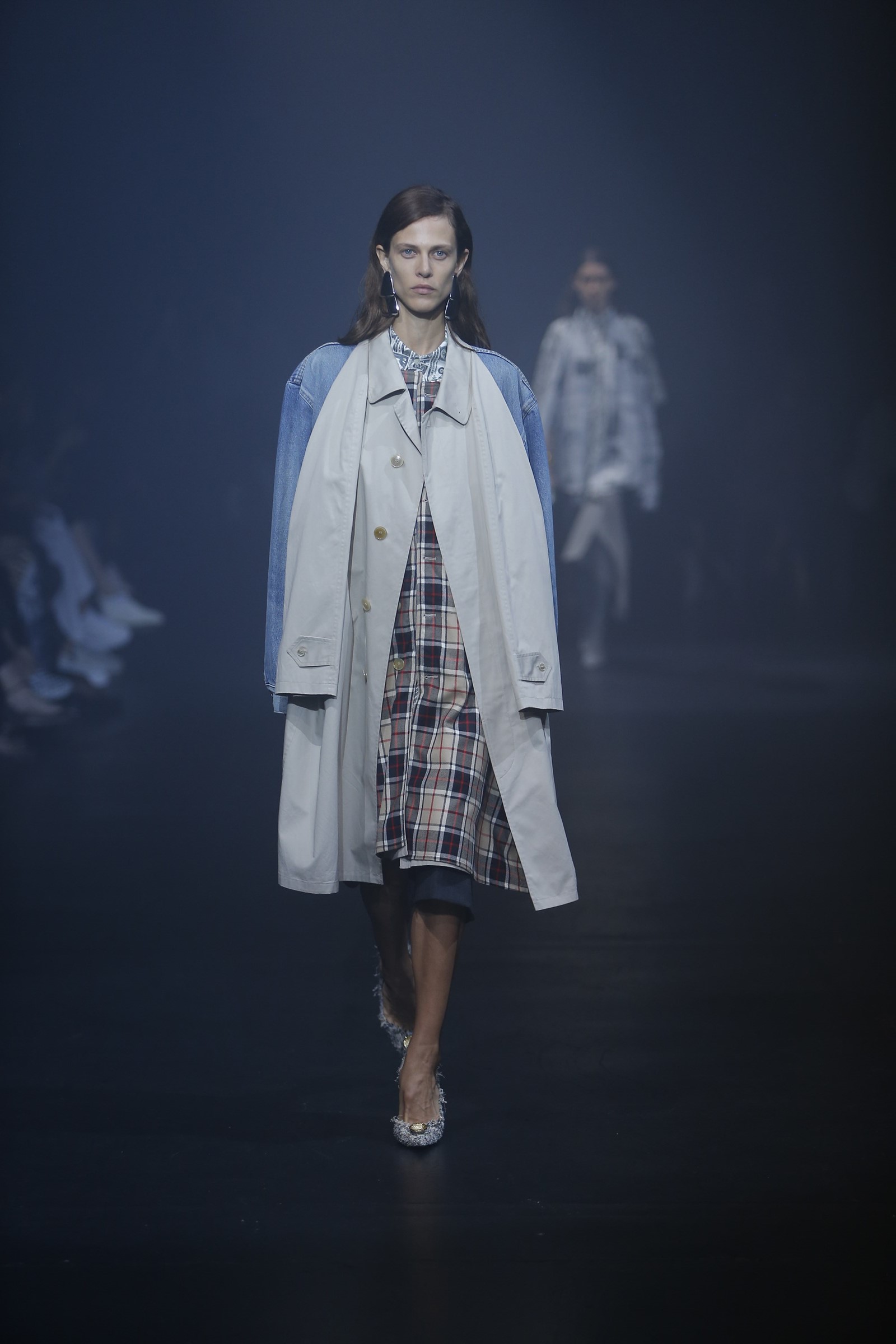The urge to épater la bourgeoisie – to shock the establishment – has been a rallying cry for fashion since circa Yves Saint Laurent. And how better to épater than to serve up their own whims and predilections on a plate, artfully twisted like a knotty bunch of spaghetti? That was the central notion to Demna Gvasalia’s Spring/Summer 2018 Balenciaga show, where the rules and regulations of bourgeoisie dress were ripped apart, figurative and literally, and Frankensteined together to create something arresting, and new.
Balenciaga was never the preserve of the bourgeoisie – when Cristóbal himself was crafting the couture, the price point was too steep and the sensibility too extreme. Bourgeoisie in the 30s gravitated towards quiet clothes – Molyneaux, Mainbocher – and in the 50s and 60s it was the safe styles of Chanel or the safe name of Dior (bar that blip under the radical upstart Yves Saint Laurent). In all, Balenciaga was too pearl-clutchingly avant-garde to appeal to the bourgeoisie – despite the fact that, slap bang in the middle of the 8th arrondissement on Avenue Georges V, the maison was in the very heart of their stomping ground. Demna Gvasalia has spent most of his working life in the less salubrious enclaves of the 11th, but has obviously been spending time observing them.
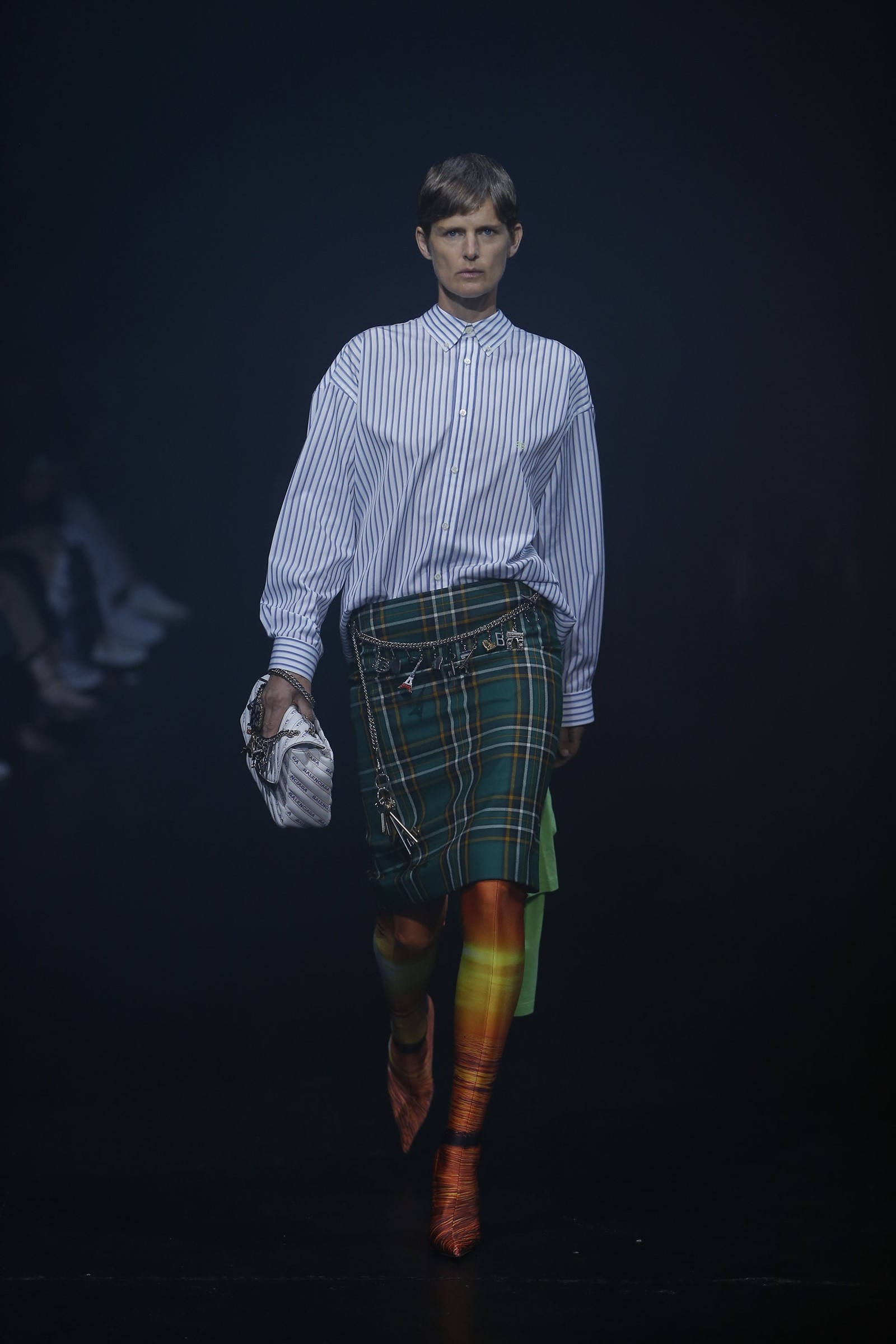
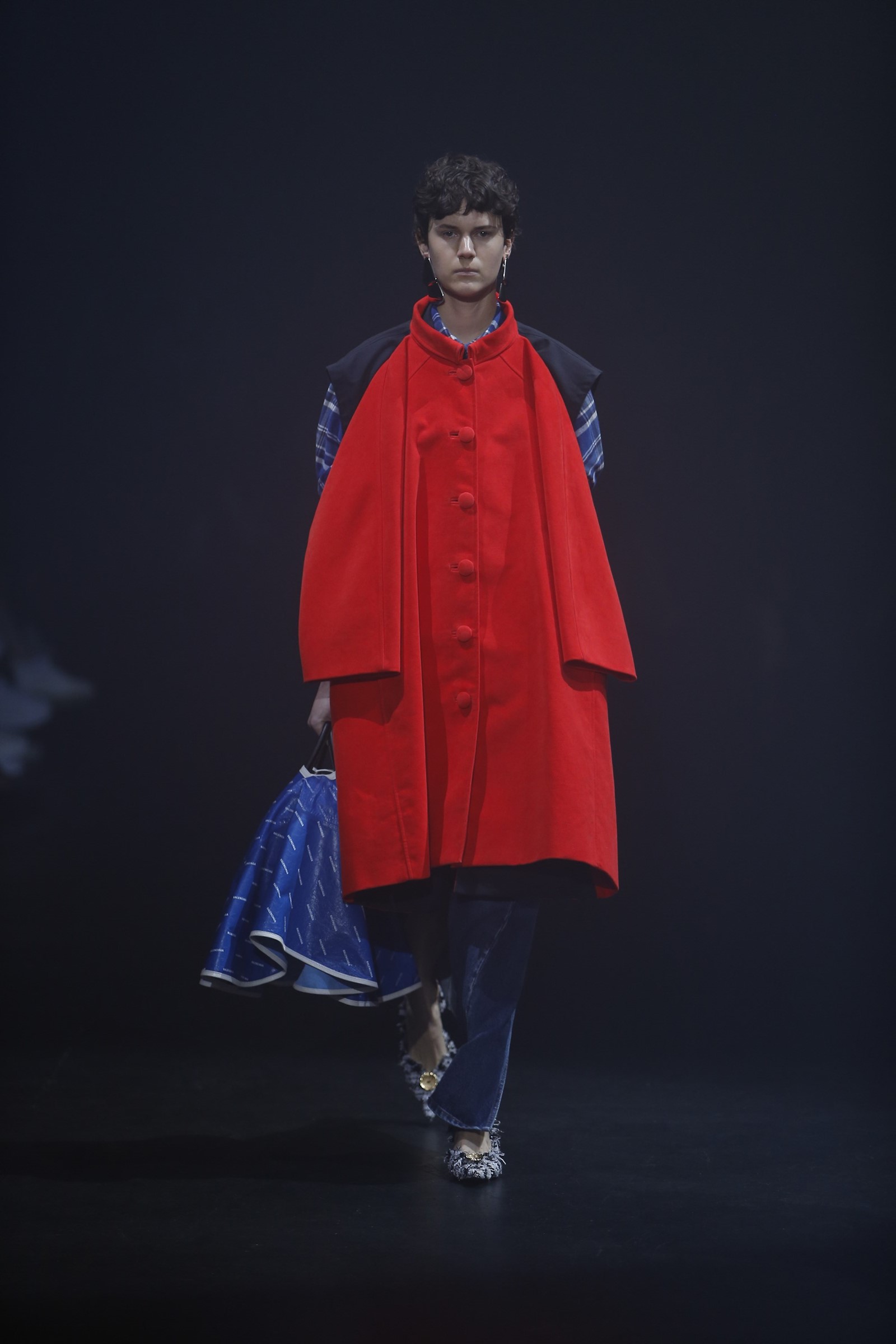
What Gvasalia saw was everyday, banal ugliness, which he chose to transform into fashion for his latest Balenciaga collection. It could be the ugliness of lurid screensaver graphics of colour-saturated daisy fields or suspiciously blue skies that people have neglected to change from their factory settings, the kind of scallop-edge suburban sun parasols, splattered with Lily Pulitzer-ish prints, you pitch over a plastic patio dining set, or just tweedy bouclé suits and quilted chain-strap bags. Gvasalia showed all of the above, chewed up and regurgitated, with a new freshness in the oddness of their proportion. This collection was, he said backstage, more him and less an overt homage. After all, his last collection contained a sequence of direct archival reissues – grand ballgowns in moiré, satin, velvet or ostrich feathers, that carry healthy five-figure price-tags and are only produced to order, as true hand-made haute couture. Could any homage be more true? Probably not. That marked the centenary of Balenciaga. This collection was a move away.
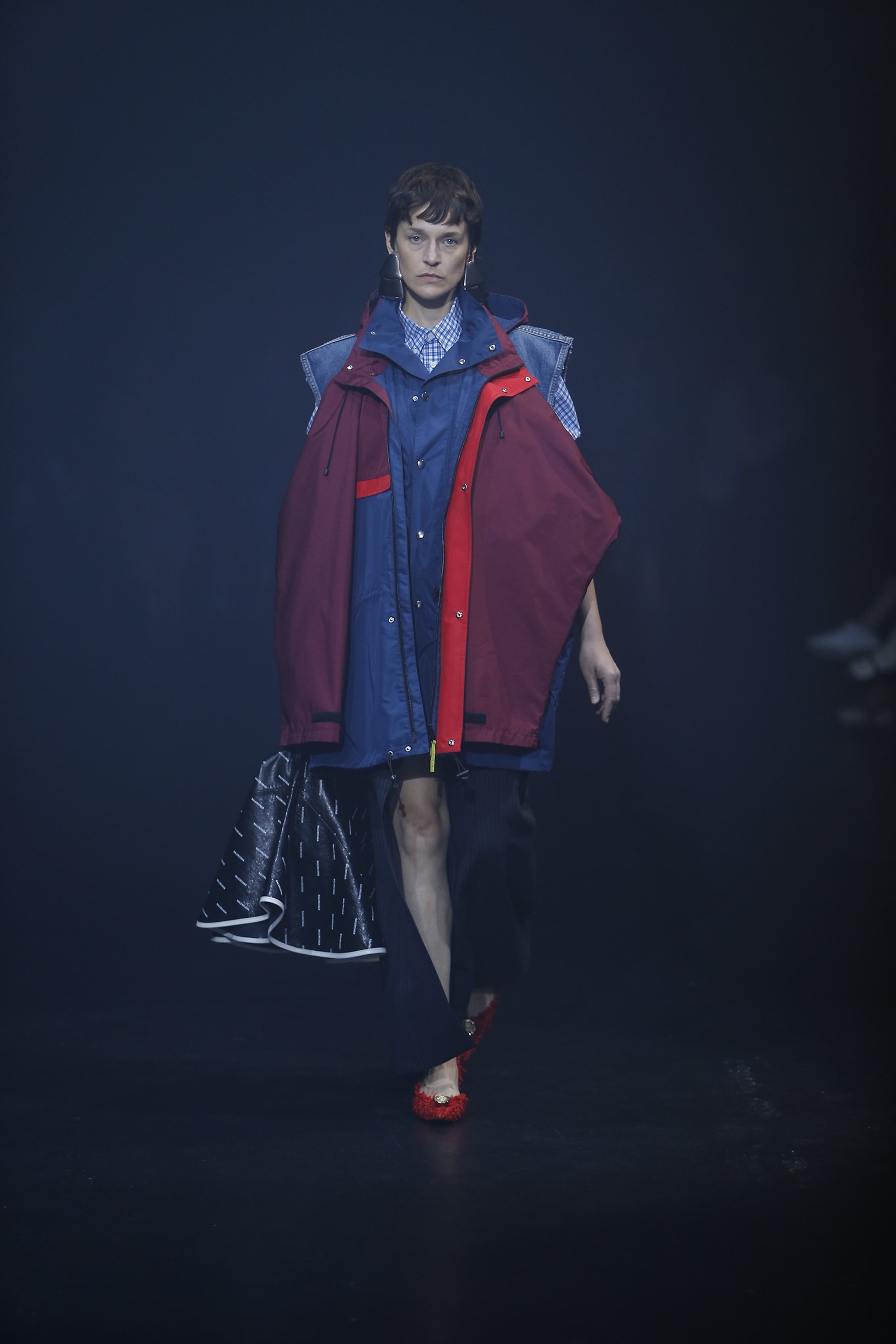
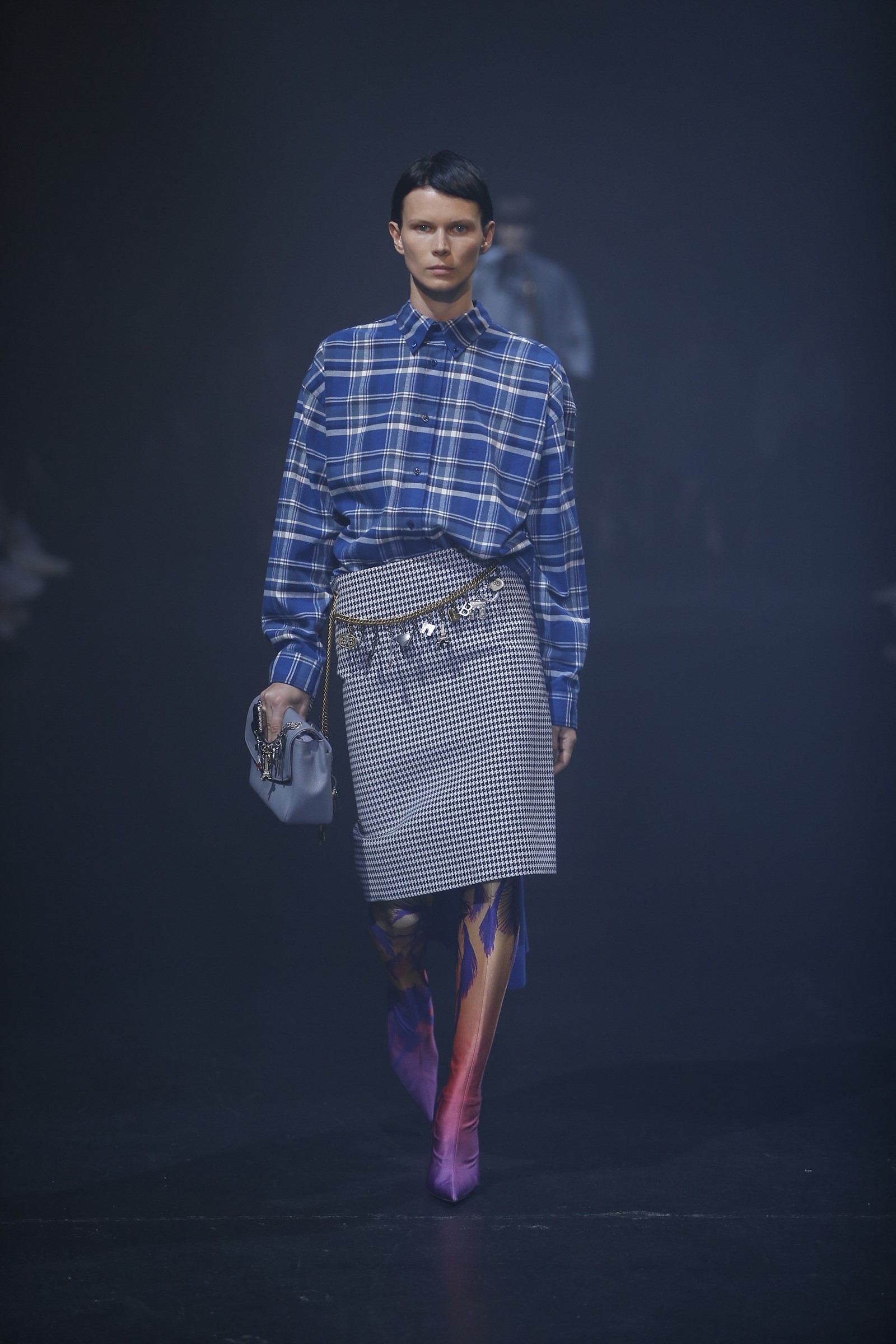
Balenciaga’s more épater-ing elements relied on reconfiguring everyday items – including the aforementioned, but also including trench-coats, denim jackets, flannel shirts and the like – to give them a new, otherworldly elegance. Plenty of the items were fused together into a double-duty garment; a trench with a denim jacket, for instance. They were two entirely separate garments joined at the neck – when you wore one, the other dangled in front or out back. Both made odd reference – one could even say homage – to the cocooning shapes, the experiments in fit and unfit jutting forward and backwards, that were the trademark of Balenciaga’s couture. Maybe I’ve spent too much time in the Balenciaga archive?
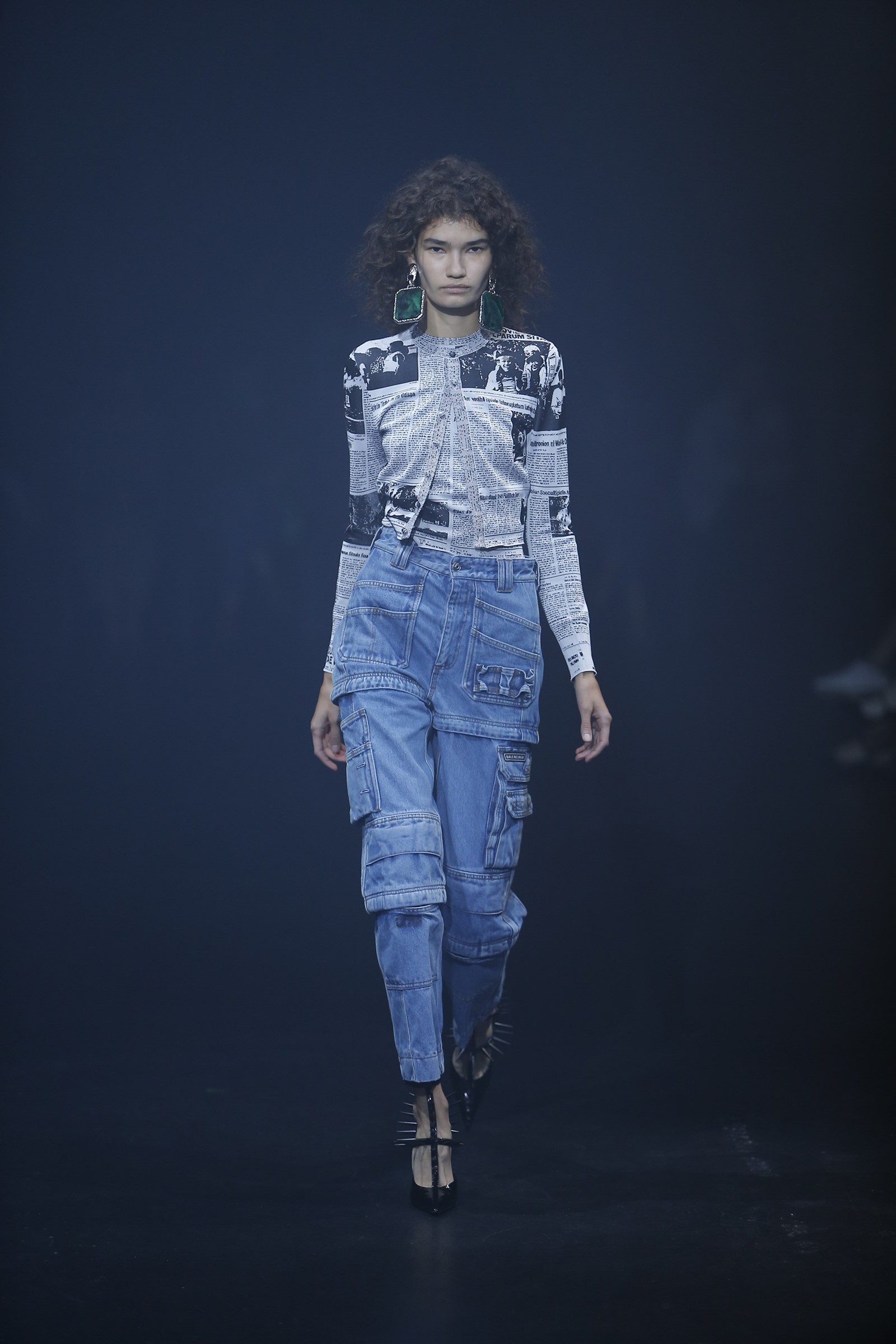

Ultimately, the strength of this collection lay in how it rewrote history and adjusted your eye. You could read Balenciaga into these clothes, even if they weren’t intended to communicate it. Maybe that was the big idea Demna Gvasalia had. He also used newspaper print (which was a Schiaparelli trademark, not Balenciaga, but no matter). Gvasalia’s newsprint, however consisted of items his team wrote themselves – happy stories, “fake good news,” Gvasalia grinned backstage. Rewriting history feels like the leitmotif of his Balenciaga. And when it comes to the fashion bourgeoisie, nothing could shock them quite like that.
